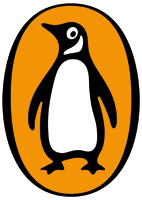
Penguin turns 75

From its humble beginnings in 1935, Penguin, has grown into one of the most beloved international brands boasting a back-list of some of the world’s best selling authors. The iconic international publishing company, which turned 75 last year, has published the works of 25 Nobel Prize winners, 16 Pulitzer Prize winners and 10 Booker Prize winners. It keeps more than 5,000 different titles in print at any time and with offices in 15 countries, it connects authors with readers across the globe. The group caters to every stage of a reader’s life, offering a wide range of genres including popular, literary, and classic fiction as well as non-fiction, travel, lifestyle, children’s and reference works.
The beginnings
Founded by Sir Allen Lane in 1935, Penguin Books revolutionized the publishing industry with its popular low-cost paperbacks. The trigger for embarking on this business venture came about during Mr. Allen’s1 return to London after visiting the author Agatha Christie in Devon, England. Frustrated by the narrow selection of reading material available at Exeter railway station, Mr. Allen determined to make affordable, good quality contemporary literature widely available in non-traditional book-selling locations, such as railway stations and chain stores. He even invented the “Penguincubator”, the first vending machine for books, which was installed at 66 Charing Cross Road, London. For a few pence, a passerby could immediately get hold of something to read. So began the paperback revolution.
The first Penguin paperbacks appeared in the summer of 1935 and were distributed out of the crypt of Holy Trinity Church in Marylebone Road, London, using a fair-ground slide to receive deliveries from the street above. They included works by Ernest Hemingway, André Maurois and Agatha Christie.
The success of Penguin Books lay in its recognition of the “existence of a vast reading public for intelligent books.” By offering entertaining and good quality contemporary literature at low cost, Penguin converted the reading public from “book-borrowers into book-buyers.”
The simple and distinctive appearance of the book covers – three horizontal bands, the upper and lower of which were color coded – orange for fiction, blue for biography and green for crime - has become a design classic and a hallmark of the early paperbacks. The initial design was created by then twenty-one-year-old office junior Edward Young, who also drew the first version of the Penguin logo.

Penguin - an iconic brand
(Photo: Penguin Group)
Over the years, the company has expanded, acquiring new imprints. Two of the company’s most famous names were launched in the 1940s - Puffin, in 1940, as a series of non-fiction picture-books for children and Penguin Classics in 1946.
The early success of the Puffin series prompted the company to start publishing children’s fiction a year after its launch. The children’s favorite, Worzel Gummidge by Barbara Euphan Todd was among its first titles. The unveiling of the Penguin Classics series with E.V. Rieu’s translation of The Odyssey, made classic texts available to the general public. This world-famous series currently consists of some 1,200 titles (including those in the Penguin Modern Classics series) ranging from The Epic of Gilgamesh, one of the earliest known works of literature, to the modern classic, One Flew Over the Cuckoo’s Nest.
By the 1960s, Penguin had become firmly established as a major force in publishing and, true to its pioneering roots, helped to transform Britain’s legal landscape. In 1960 the company was charged under the Obscene Publications Act for publishing D.H. Lawrence’s Lady Chatterley’s Lover. The book was notorious at the time for its explicit descriptions of the physical relationship between a working class man and an aristocratic woman. Penguin fought back, and won its day in court with an acquittal. This landmark victory marked a turning point in British censorship law, fuelled the company’s ever-expanding popularity and boosted the novel’s sales – Penguin sold 2 million copies in six weeks.
A year later, in 1961, Penguin Books became a public company setting a new record on the London Stock Exchange with a share offering that was oversubscribed 150 times.
A new venture launched in 1967, the Allen Lane The Penguin Press imprint, allowed Penguin to publish in both hardback and paperback. Following the death of the company’s founder, Sir Allen Lane, in 1970, Pearson, the international media group, bought Penguin. Since that time, the company has continued to expand and develop and remains “a major and vital publishing force.”
Throughout its history, the company has embraced, and often been a pioneer of, new technology in its drive to keep pace with a rapidly changing book publishing landscape.
In the 1960s new techniques such as phototypesetting and offset litho printing dramatically reduced printing costs and paved the way for the introduction of photography and novel approaches to graphic design on paperback covers.
Some 30 years later in 1993, Penguin Audiobooks were launched, “bringing a mix of classic and contemporary titles to a listening audience and using only the finest actors to record them.” Over 300 titles are now available on CD or as downloadable eAudiobooks. Penguin was also the first trade publisher to have a website www.Penguin.co.uk and the first to open an eBook store, known as ePenguin, in 2001.

Penguin's first priced app for
children. (Photo: Penguin Group)
With the advent of digital technologies, the book publishing industry, like so many others, is undergoing a major transformation. A common objective is to find ways to harness value and generate income from the rapidly growing digital market; take advantage of evolving technologies; and reach new readers through non-traditional means. Penguin Group Chairman and chief executive John Makinson notes, “Our industry is changing fast and the new landscape demands something different from us. Digital technology is altering the shape of book publishing, creating tremendous new opportunities but also putting unprecedented pressure on our costs and our traditional ways of working.” He added, “we have to stay ahead if we are to grow and prosper.”
Penguin’s digital business is thriving with an expanding portfolio of some 15,700 eBook titles available around the world on multiple platforms. The company is taking advantage of new technology to connect readers with their favorite authors online and to deliver books to readers in their preferred format. In 2010 the company launched a number of digital initiatives, including:
- a partnership with Apple – on the launch of their iBookstore and iPad in April, Winnie the Pooh by A.A. Milne, was preloaded onto the device;
- the launch of the Group’s first priced application (“app”) – Topsy & Tim Start School by Ladybird (part of the Penguin Group) – which walks children and parents through the life-changing experience of starting school;
- the release of a new iPad app, Spot Goes to School, to mark the 30th anniversary of the publication of this popular children’s book. The interactive lift-the-flap story offers children a fun-filled and captivating reading experience.
- Penguin U.S. launched a groundbreaking Amplified Edition of The Pillars of the Earth by Ken Follet in partnership with Starz LLC that showcases video clips, artwork and original music from the Starz Originals TV series based on the book.
Penguin U.K. claimed another first in 2010 with the publication of The Fry Chronicles, the second volume of Stephen Fry4’s autobiography, in five different formats (hardback, audio book, app, eBook and enhanced eBook). This popular book, which rose to number one across all formats offers readers the possibility of reading the book in the format of their choice.
“Penguin Community”, a new interactive web-based community for readers was also launched in the U.S. in 2010. It allows readers to customize their profile according to their literary tastes, become a “fan” of various books and authors, link-up with readers having similar interests and comment on different discussions about selected books and authors.
| The Penguin Group |
|---|
|
Today, the Penguin Group publishes under a wide range of market-leading imprints and prominent trademarks, including:
|
A continued commitment to promoting creativity
The Group continues to fuel Penguin’s “longstanding commitment” to developing and finding new and contemporary writing and bringing new writers to the attention of the reading public. This includes the setting up of The Penguin Prize for African Writing, which “seeks to highlight the diverse writing talent on the African continent and make new African fiction and non-fiction available to a wider readership.” Another example is the Amazon Breakthrough Novel Award in the U.S. which, in 2010, attracted thousands of entrants from around the world. Similarly, Penguin China’s recently launched publishing program seeks to publish five to eight books a year covering Chinese fiction and non-fiction.

Photo: Penguin Group
The 75th anniversary of Penguin Books has been an opportunity for the Group to reinforce the visibility of its brand with a range of activities organized around the globe. These include:
- The launch by Penguin Australia of 75 new Popular Penguins, featuring classics such as Northanger Abbey and Robinson Crusoe as well as titles by some of Australia’s best known and most popular writers.
- The launch of the Ink Series in the U.S., six Penguin Classics with art by some of the most prominent tattoo and poster artists of our day and Penguin 75, an illustrated collection of some the best covers from Penguin Books in the U.S. together with comments from authors, designers and artists.
- Penguin UK launched its Penguin Decades series which features novels from the 50s, 60s, 70s and 80s each of which “is considered a landmark of storytelling.” These striking editions “celebrate Penguin’s extraordinary design heritage” and follow “Allen Lane’s ethos of making great writing affordable and available to everybody.”
- In Canada, the anniversary was marked with the launch of the Allen Lane and the History of Canada series.
- In Brazil, the company launched its Classics Series in Portuguese through a partnership with leading Brazilian publisher Companhia das Letras;
- Penguin India marked the event by ensuring its visibility at major book fairs including the Jaipur Literary Festival, the World Book Fair in New Delhi and Penguin’s literary festival, “Spring Fever”. It also launched the “Your Favorite Penguin” campaign and the “75 Best Books List”.
Penguin seeks to be truly the “home of reading”, offering something for readers of all ages and covering a wide range of interests. Its prestigious back-list of authors is “unparalleled in breadth, depth and quality” and a veritable “who’s who” of the industry. Let us hope that the distinctive black-and-white penguin on an orange background that has shaped the popular literary landscape of the past continues to thrive in the future.
____________________________
1 The publisher was knighted in 1962.
2 Stephen Fry is an English actor, screenwriter, author, playwright, journalist, poet, comedian, television presenter and film director.
The WIPO Magazine is intended to help broaden public understanding of intellectual property and of WIPO’s work, and is not an official document of WIPO. The designations employed and the presentation of material throughout this publication do not imply the expression of any opinion whatsoever on the part of WIPO concerning the legal status of any country, territory or area or of its authorities, or concerning the delimitation of its frontiers or boundaries. This publication is not intended to reflect the views of the Member States or the WIPO Secretariat. The mention of specific companies or products of manufacturers does not imply that they are endorsed or recommended by WIPO in preference to others of a similar nature that are not mentioned.